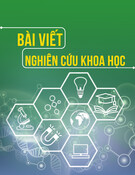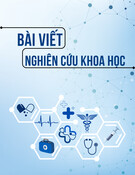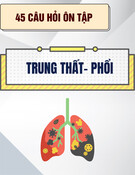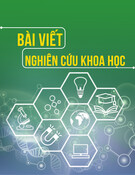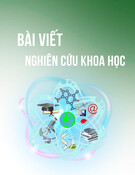
Academic Editors: Claudio Ferrante,
Irwin Rose Alencar Menezes,
Henrique Douglas Melo Coutinho,
Almir Gonçalves Wanderley and
Jaime Ribeiro-Filho
Received: 3 December 2024
Revised: 23 January 2025
Accepted: 27 January 2025
Published: 5 February 2025
Citation: Neves, K.O.G.; Silva, S.O.;
Cruz, M.S.; Mar, J.M.; Bezerra, J.A.;
Sanches, E.A.; Cassani, N.M.;
Antoniucci, G.A.; Jardim, A.C.G.;
Chaves, F.C.M.; et al. Investigation of
the Influence of the Extraction System
and Seasonality on the
Pharmacological Potential of Eugenia
punicifolia Leaves. Molecules 2025,30,
713. https://doi.org/10.3390/
molecules30030713
Copyright: © 2025 by the authors.
Licensee MDPI, Basel, Switzerland.
This article is an open access article
distributed under the terms and
conditions of the Creative Commons
Attribution (CC BY) license
(https://creativecommons.org/
licenses/by/4.0/).
Article
Investigation of the Influence of the Extraction System and
Seasonality on the Pharmacological Potential of
Eugenia punicifolia Leaves
Kidney O. G. Neves
1
, Samuel O. Silva
1
, Marinildo S. Cruz
1
, Josiana Moreira Mar
2
, Jaqueline A. Bezerra
2
,
Edgar A. Sanches 2, Natasha Marques Cassani 3, Giovanna A. Antoniucci 3, Ana Carolina Gomes Jardim 3,
Francisco C. M. Chaves 4, Leonard D. R. Acho 5, Emersom S. Lima 5, Marcos B. Machado 1,*
and Alan D. C. Santos 1,6,*
1Núcleo de Estudos Químicos de Micromoléculas da Amazônia—NEQUIMA, Universidade Federal do
Amazonas, Manaus 69067-005, AM, Brazil; kidneydeoliveira@ufam.edu.br (K.O.G.N.);
samuel-oliveira.silva@ufam.edu.br (S.O.S.); marinildo.cruz@ufam.edu.br (M.S.C.)
2Laboratório de Polímeros Nanoestruturados (NANOPOL), Departamento de Física de Materiais,
Universidade Federal do Amazonas, Manaus 69067-005, AM, Brazil; josimoreira@ufam.edu.br (J.M.M.);
jaqueline.araujo@ifam.edu.br (J.A.B.); sanchesufam@ufam.edu.br (E.A.S.)
3Laboratory of Antiviral Research, Federal University of Uberlândia, Uberlândia 38405-302, MG, Brazil;
natashacassani@ufu.br (N.M.C.); giovanna.antoniucci@ufu.br (G.A.A.); jardim@ufu.br (A.C.G.J.)
4
Empresa Brasileira de Pesquisa Agropecuária—Embrapa Amazônia Ocidental, Manaus 69010-970, AM, Brazil;
celio.chaves@embrapa.br
5Laboratório de Atividade Biológica, Faculdade de Ciências Farmacêuticas, Universidade Federal do
Amazonas, Manaus 69067-005, AM, Brazil; leonard.rosale@ufam.edu.br (L.D.R.A.);
eslima@ufam.edu.br (E.S.L.)
6Núcleo de Pesquisa de Produtos Naturais, Universidade Federal de Santa Maria,
Santa Maria 97105-900, RS, Brazil
*Correspondence: marcosmachado@ufam.edu.br (M.B.M.); alan.santos@ufsm.br (A.D.C.S.)
Abstract: The chemical complexity of natural products, such as Eugenia punicifolia (Kunth)
DC. plant, presents a challenge when extracting and identifying bioactive compounds.
This study investigates the impact of different extraction systems and seasonal variations
on the chemical profile and pharmacological potential of E. punicifolia leaves using NMR
spectroscopy for chemical analysis and canonical correlation analysis (CCA) for bioactivity
correlation. Extracts obtained with methanol (M), ethanol (E), methanol/ethanol (1:1, ME),
and methanol/ethanol/water (3:1:1, MEW) were analyzed for antioxidant, antiglycation,
and antiviral activities. Quantitative ¹H NMR, combined with the PULCON method, was
used to quantify phenolic compounds such as quercetin, myricetin, catechin, and gallic acid.
The results showed that the MEW extract obtained in the rainy season exhibited the highest
antioxidant and antiglycation activities, with a greater than 93% of advanced-glycation
end-products (AGEs) inhibition capacity. Furthermore, our results showed that all the
extracts were able to inhibit over 94% of the Zika virus (ZIKV) infection in Vero E6 cells.
The CCA established strong correlations between the phenolic compounds and bioactiv-
ities, identifying gallic acid, catechin, quercetin, and myricetin as key chemical markers.
This study demonstrates the importance of selecting appropriate extraction systems and
considering seasonality to optimize the pharmacological potential of E. punicifolia leaves
and highlights the efficacy of NMR in linking chemical composition with bioactivities.
Keywords: pedra-ume-caá; medicinal plant; solvent extraction; antioxidant; antiglycation;
antiviral; Zika virus; phenolic compounds; NMR spectroscopy; CCA
Molecules 2025,30, 713 https://doi.org/10.3390/molecules30030713






